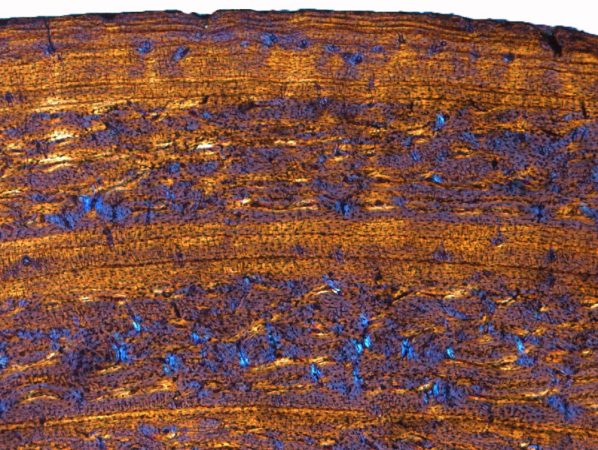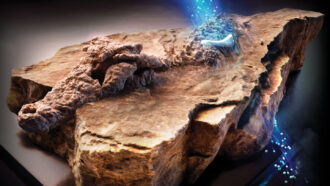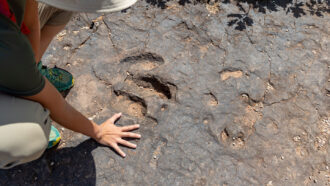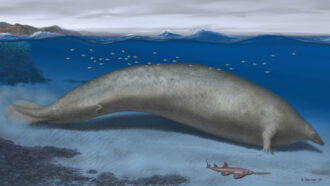Hot or cold dinos
Patterns in dinosaur bones fuel a debate over whether they were warm- or cold-blooded

Dinosaurs have been dead for about 65 million years, which makes studying the animals — not just their unearthed bones and teeth — extraordinarily difficult. But that hasn’t kept researchers from trying. Newfound evidence may now help answer one question that still vexes scientists: Were the ancient reptiles warm- or cold-blooded?
Bodies of warm-blooded animals, such as mammals and birds, stay the same temperature no matter what the weather is. The body temperature of cold-blooded animals, including snakes and frogs, instead goes with the flow, rising in warm weather and cooling in chillier temperatures.
Paleontologists — researchers who study ancient living things, including dinosaurs — have to invent creative ways to take the temperatures of long-dead dinos. In her new study, paleontologist Meike Köhler of the University of Barcelona in Spain found a clue by looking at modern mammals.
She and her colleagues studied slices of thighbones taken from 115 modern mammals, including giraffes, reindeers and gazelles. Viewed under a microscope, those slices contained dark lines — the same type found in the bones of dinosaurs and lizards.
“People always said that mammals do not show these lines,” Köhler told Science News. She says the idea that mammals lack the lines is “like a myth that’s going around; you read it everywhere.”
The lines reveal how a creature’s bones grew. Like a tree that adds a ring of growth every year, the bone gains a thick ring during growth spurts and times of good nutrition. When food is lacking, an annual ring will be thin, indicating the animal added only a small sheet of new bone that year. The thin rings are called “rest lines” and suggest a slowdown in growth during that time.
The presence of the rings in mammal bones examined by Köhler’s team changes a popular assumption about dinosaurs. Because the lines were previously only found in lizards, which are cold-blooded, scientists assumed that dinosaurs must have been cold-blooded, too.
But thanks to Köhler and her colleagues, scientists now know that mammal bones also have these lines. The new study adds fuel to the argument that maybe dinos weren’t cold-blooded after all.
“It’s probably not going to close the debate whether dinosaurs were warm-blooded or not,” paleontologist Martin Sander of the University of Bonn in Germany told Science News. “But the argument that [these lines] mean cold-blooded is certainly not valid any longer.”
Power words
paleontologist A scientist who studies fossil animals and plants.
mammal A warm-blooded, vertebrate animal of a class that is distinguished by the possession of hair or fur, the secretion of milk by females for the nourishment of the young and (typically) the birth of live young.
warm-blooded Animals (chiefly mammals and birds) that maintain a constant body temperature, typically above that of their surroundings.
cold-blooded Having a body temperature that varies with that of the environment.







